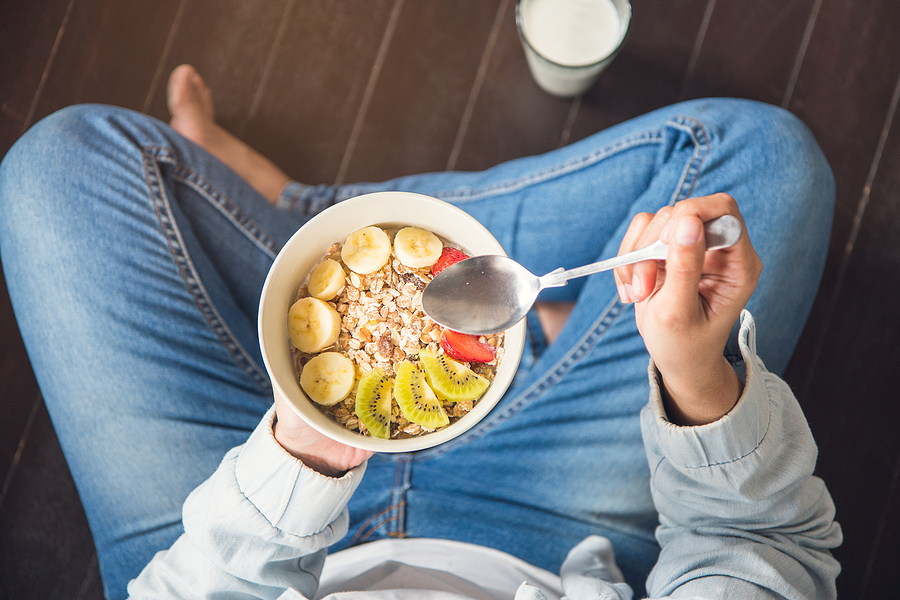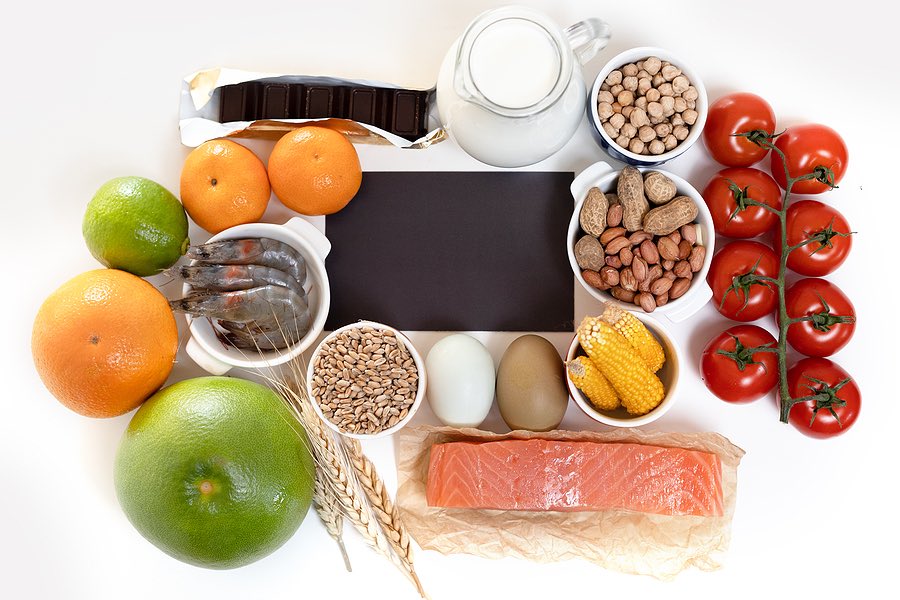Updated 06/19/2022
When I was younger, my menstrual cycle ruled my life. Some months were simply a little difficult, while others left me feeling as though my body had been invaded by an alien, leaving me bloated, nauseated, with terrible cramps, low energy and a voracious appetite. What an ordeal that was!
One incident illustrates what I was going through perfectly; I’ll never forget it. I was a 20-year old recent college graduate, home for the summer while preparing for an amazing and much anticipated trip to Europe. I should have been elated, but instead I couldn’t even find the energy to renew my passport, even though I knew I couldn’t take the trip without it.
I sat in my mother’s car one day, waiting for her to return from an errand, running through all of the details I needed to take care of in my mind. Get tickets, shop for clothing, call my travel companion, renew my passport.
I knew these thoughts should inspire excitement, but instead I had an overwhelming sense of numbness – like I was watching myself from afar. Why couldn’t I get past my despair and confusion to the sense of adventure and anticipation I’d had just a few days earlier?
Oh, how I wish I’d known then what I know now. So many of my patients have struggled in similar ways, managing painful periods and challenging symptoms month after month. But it doesn’t have to be that way! There are so many steps women can take to help themselves sail smoothly through their cycle.
Have you experienced a similar moment, where you just knew something was off, but had no idea what to do about it? Do you dread the approach of your period every month, terrified that you simply won’t be able to function for a few days? Have you ever wondered what you could do to keep things on a more even keel all month long?
If so, you’re in the right place! I’ve learned so much, from my own experience, and from helping women for more than three decades. We really can take control of our bodies and our hormonal balance, which is the root cause of the crazy ups and downs of our menstrual cycles.
The easiest way to manage hormone levels to avoid these symptoms is through your diet. And this isn’t just some vague advice about “eating better”. Did you know that what you eat in each different phase of your cycle can make a big difference? If not, keep reading!
What, exactly, is your menstrual cycle?
Every woman has heard of their menstrual cycle, but few understand exactly what that means, and what is going on inside their bodies. They know they can get moody and teary at certain times of the month. They know they have intense cravings, and may experience bloating, cramps, headaches and other uncomfortable symptoms. But they don’t know why.
Your menstrual cycle is all about reproduction. When things are functioning as they should throughout your cycle, your body is healthy enough to reproduce safely.
But a lot of things can interrupt the process, and since reproduction isn’t essential to your survival, it’s one of the first systems to be put on hold when something else is going on in your body. This also prevents women from becoming pregnant when the environment for reproduction isn’t ideal.
For our ancestors, these were times of famine or other threats to survival. Modern irregularity in cycles often indicates periods of high stress, hormonal imbalance, and/or poor nutrition.
For most women between puberty and menopause, 10-12 cycles of between 28 and 35 days happen each year. More important than the actual number of days or cycles you have is that there is a regular, consistent pattern.
During a complete cycle, an ovary will release an egg (ovulation) while changes in hormones prepare the uterus for a possible pregnancy. If the egg is unfertilized, the uterus lining sheds — that’s the bleeding you see.
Levels of both estrogen and progesterone naturally change throughout the cycle. Other hormones produced by the pituitary gland promote ovulation and production of estrogen and progesterone by the ovaries.
What happens in each phase of the menstrual cycle?
There are several distinct phases to a normal cycle, which begin on the first day of bleeding. That means the first phase is the menstrual phase, which lasts for the length of the bleeding. Most women are in this phase for 3-5 days, though anything from 2 to 7 days is considered normal.
In this phase, your uterine lining is shedding because of the previous cycle. Hormones are low in this stage. Towards the end of the menstrual phase, estrogen and follicle stimulating hormone (FSH) begin to increase. At the same time, your body is preparing several eggs for ovulation.
When bleeding ends, you have entered the follicular phase, during which your body goes through the selection process, settling on one dominant follicle to focus on in preparing for ovulation. Estrogen is the queen of this part of the cycle, and luteinizing hormones also come into play to trigger ovulation. At the end of this phase, the follicle bursts and an egg is released, ready to be fertilized.
At this point, you are mid-cycle, entering the luteal phase. This is the time after ovulation when your body is ready for a fertilized egg to become implanted in the uterus. This phase lasts around six days, though again, every woman is different.
During this time frame, the dominant follicle, known as the corpus luteum, releases progesterone to keep the uterine lining strong and ready to ensure a successful pregnancy should an egg be fertilized.
The week before your menstrual phase begins again, the premenstrual phase, is when your body realizes no egg has been fertilized and begins preparations to begin the whole cycle all over again. The corpus luteum begins to erode, and progesterone decreases. Estrogen is also low at this point in time.
Premenstrual syndrome (PMS) happens in this phase, often because of low progesterone levels. This is the most common phase for women to feel uncomfortable symptoms.
Factors that impact your cycle
Some irregularity in cycles is normal, and nothing to worry about. And remember, every woman is a unique individual, so you can’t judge your own situation by what happens for your friends and family. But there are a number of factors that can impact your cycle, leading to undesirable symptoms.
It’s important to consider the stage of life you’re in. When you first have your period, it may be irregular as your body finds its rhythm. Later in life, during perimenopause, you may start to have fewer periods until they eventually stop altogether, meaning you’ve been through menopause (a full year without a period).
Another obvious factor that impacts your cycle is pregnancy, whether it’s a normal pregnancy, ectopic, or you miscarry.
Lifestyle factors are the things we can actually control, so I spend most of my time talking about these with my patients.
Factors that can impact your cycle include:
- Eating disorders
- Over-exercising
- Lack of body fat
- Stress
- Certain medications, including anti-psychotics, antidepressants, weight loss pills, steroids, hormones and medications for ADHD.
Physical health conditions can also change your cycle. If you miss one period, it’s probably nothing to worry about. But if you can’t find any consistent pattern, it’s time to talk with a health care provider.
Heavy bleeding can have a number of causes, including uterine fibroids, endometriosis, or polycystic ovarian syndrome.
If you have irregular periods or extreme PMS, one of the first things to try is changing the way you eat to support hormonal balance.
What to Eat for Each Phase of the Menstrual Cycle
I have general recommendations about healthy eating that I promote to every woman: eat real foods, buy organic when you can, and eat a wide variety of fruits and vegetables to get the broadest range of nutrients that you can.
All of these tips still stand if you are eating intentionally to support your body in the different phases of your menstrual cycle. But those are the broad-stroke tips — let’s use a brush with a finer point to paint a specific picture of the impact certain foods can have on your body in each phase.
Your cycle is a great opportunity to set a regular rotation for variety in your diet. And when you know which foods can impact the natural hormonal shifts and keep things balanced, you can target those potential symptoms that you’re trying to avoid.
Tracking your cycle
If you want to eat according to your menstrual cycle, you first have to know where you are in it! If you’re not already tracking your cycle, the easiest thing to do is to wait for your next period, and record day 1. You can simply mark this on a calendar if you’d like, but there are also a number of free apps that make tracking your cycle much easier. Popular options include Clue and Flo.
In addition to making eating according to your cycle easier, tracking your period can help you to identify and understand patterns in your energy level, mood, and more.
Remember that a “normal” cycle can be anywhere from 21 to 35 days. For the purposes of this article, I’m basing each phase on a 28 day cycle – but you can use your own period tracker to adjust accordingly.
Eating in the menstrual phase (days 1 – 5)
During your period, your body needs rest and support. Menstruation itself is an inflammatory response that allows the shedding of the uterine lining. That means loading up on foods that are rich in nutrients and have anti-inflammatory properties is important.
You are also losing iron in this phase, so foods that contain iron are essential. Spinach is fantastic for replenishing iron! Other great foods for this phase include sweet potatoes, berries, and healthy fats, like avocado. Avoid foods high in sugar as much as possible. If you’re craving chocolate, go for high-quality dark chocolate.
Best foods for the menstrual phase:
- Spinach
- Berries
- Sweet potatoes
- Avocado
- Beans and legumes
- Wild-caught fish
Eating in the follicular phase (days 6 – 14)
This is the time of month when many women feel their best; there’s not quite as much going on inside in this phase. A regular, balanced diet of whole foods, lean protein and healthy fats will help the maturing follicle get the nutrients it needs.
High levels of hormones may lead to dehydration in this phase, so be sure you are drinking plenty of water and other hydrating liquids (like unsweetened herbal tea) during this phase.
Best foods for the follicular phase:
- Wild-caught fish
- Organic chicken & turkey
- Grass-fed beef
- Nuts
- Eggs
- Herbal tea
- Sprouted foods
Eating in the ovulatory phase (days 15 – 17)
This is when your body needs support to effectively rid itself of toxins to promote easy metabolization and elimination of hormones used in the follicular phase.
Foods that support your liver, such as cruciferous vegetables like broccoli and cauliflower, as well as berries and protein, are especially important. Fiber also helps your body in the elimination process, so don’t skimp on it during this phase!
Pay attention to any digestive issues that arise, and select easily digestible foods if you notice discomfort. Probiotic foods, such as yogurt and sauerkraut, can help keep digestion functioning well.
Best foods for the ovulatory phase:
- Broccoli
- Cauliflower
- Berries
- Flax seeds
- Probiotic foods (yogurt, sauerkraut)
Eating in the luteal/premenstrual phase (days 18 – 28)
The week prior to menstruation is when you want to support your body to avoid uncomfortable symptoms. Magnesium rich foods can ward off cramps, sleep problems, and headaches. Nuts, seeds, leafy greens, bananas, and dark chocolate are all great options in this phase.
A word about cravings:
During your premenstrual phase, it’s common to experience cravings– often for sugary or otherwise non-nutritious foods. But unfortunately, these foods can increase inflammation, disrupt your hormones, and actually cause you to feel worse in the end.
Eating nutritious foods in accordance with your cycle may help you to experience fewer cravings (and improvements in other PMS symptoms). In the meantime, while a treat here and there is okay, try to indulge in healthy comfort foods instead. For example, you can feel pretty good about curling up in your coziest PJs with a bowl of warm chicken soup! Your body will thank you.
Best foods for the premenstrual phase:
- Nuts & seeds
- Leafy greens
- Bananas
- Dark chocolate
- Peppermint tea
What about seed cycling?
Seed cycling, the practice of eating certain types of seeds during different phases of your menstrual cycle in order to help balance your hormones, has become increasingly popular over the last few years. There is plenty of debate online over whether or not it actually “works” – but there is really no harm in giving this practice a try, as it just involves consuming seeds that are healthy anyways!
The general idea is to consume a tablespoon each of flax seeds and pumpkin seeds daily for the first half (approximately two weeks) of your cycle. During the second half of your cycle, you’ll switch to sunflower seeds and sesame seeds.
Seeds can be ground and mixed into your smoothie, yogurt, oatmeal, salad, or whatever is easiest for you.
While seed cycling alone doesn’t replace an overall healthy eating pattern, it may be worth working it into your routine to see if it helps improve your menstrual symptoms.
The right nutrition can help ease you through all of the phases of your menstrual cycle
Good nutrition is the cornerstone of good health. When you’re feeding your body properly, feeling good is so much easier! That’s because hormones stay balanced, and your body systems can work the way they should.
Understanding the natural hormonal shifts that occur during your cycle will help you select the right foods to keep you healthy, happy and thriving – no matter where you are in your menstrual cycle!







